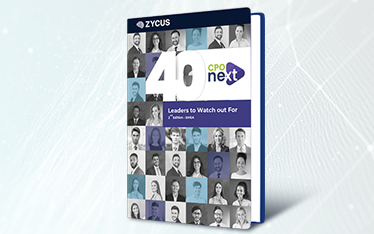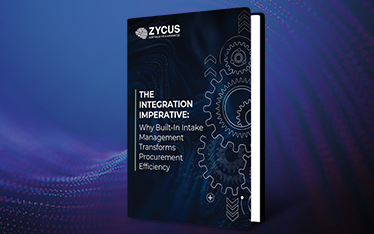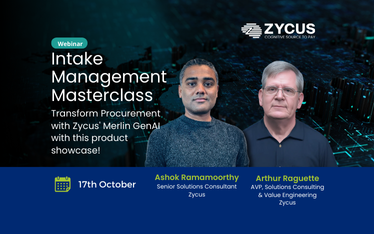A seamless and efficient procure-to-pay process (P2P) workflow is central to the growth of your enterprise.
Different departments need different goods and services on a day to day basis. In addition, there are hundreds of suppliers and product variations. Also, you have to adhere to internal and external compliance. At the same time, speed is essential. But without compromising with quality or accuracy.
The larger your business, the more likely it is that you need to advance your procure-to-pay process. It has to match the expectations of today’s millennial users and comply with all your procure-to-pay policies.
New age expectations from your procure-to-pay process
The idea of purchasing has changed drastically over the last decade. B2C shopping trends have infected the B2B purchasing behavior. Buyers want on-screen convenience, self-services, and real-time visibility into the entire purchase to pay cycle until the loop is closed.
Intelligent suggestions on eCommerce sites like Amazon have caught the imagination of procure-to-pay users in enterprises across the world. They are looking for a one-stop-shop to fulfill their purchasing, operational, and reporting needs.
Emails are inefficient as modes of maintaining, exchanging, and tracking purchase-related documents, communications, and insights. And excel sheets are no better. These are non-collaborative, siloed, and non-automatable.
The result is a series of broken pieces of information tucked away in multiple places, with different people, and with nobody having a consolidated view into it all.
A perfect case for fraud, human errors, missed discounts, and supplier defection to thrive.
Sooner or later, your ability to manage and forecast expense data gets affected. Your business operations suffer from delayed product and service deliveries, poor supplier relationships, and decreased negotiation power.
All of this can be prevented – with suitable investment in upgrading your existing procure-to-pay processes. And by turning them into world-class operations, highly intelligent and automated.
It will not only solve today’s efficiency problems but also immunize your enterprise against complexities that future growth will bring.
Learn More: Procure-to-Pay Solution
Three key benefits of a world-class procure-to-pay process
1. Speed and scale
The purchasing of goods and services for your enterprise should consume the minimum amount of your precious time and dollars.
If creating a purchase order takes more than a few minutes, something is wrong. With world-class procure-to-pay processes, you can happily say goodbye to week-long purchasing cycles.
2. Transparency
To get a hold on your expenses, you want direct visibility into the dollars flowing out of your enterprise. If you and your team currently spend an entire day or more on gathering monthly expense details, the whole purpose of the exercise is defeated.
When you upgrade your procure to pay processes, you will be delighted to access purchasing data, reports, etc., across your enterprise.
3. Democratization
Does your procure to pay process feel like it fitted better in the 19th century? Do your business users often experience frustration and fatigue each time they have to raise a requisition and get something ordered?
Then a world-class procure-to-pay workflow will feel like a fresh breeze of democratization for your employees.
Steps involved in a comprehensive procure to pay cycle
Let’s examine a typical procure-to-pay cycle from start to finish to fully understand its complexities and identify automation and cost savings opportunities.
Requisitioning
A business user sends an official communication of ‘requirement for some goods or services’ to the procurement team.
Review and approval
Relevant approving manager carefully reviews the requirement and assesses it for cost implications and purchase justifications.
Purchase order creation
The purchasing team now received a formal purchase order along with budget estimates for the validated purchase requirement.
Vendor shortlisting and requests for quote
The purchasing team shortlists suitable vendors for the specified goods and services based on their vendor policies. They also seek quotes from vendors for the specified requirement.
Negotiation and vendor selection
The purchasing team negotiates with the shortlisted vendors, compares them against criteria such as cost, quality, credibility, past relationship, and selects the right vendor.
PO confirmation from the vendor
A formal confirmation from the vendor comes to the purchasing team for the specified good and services. It covers the exact quantity, quality details as well as shipment date.
Receiving of Goods and Services
The vendor supplies the required goods and services, and the enterprise confirms receipt of the same.
Receiving Invoice
The vendor sends the invoice for the payable amount against the details of goods and services supplied.
Invoice matching and approval
The accounts payable team reviews the invoice for data and cost accuracy and then forwards it for approval and payment.
Payment
The vendor gets paid as per the invoice terms, and thus the procure to pay cycle is complete.
Challenges with traditional p2p processes
In such a complex cycle, many challenges arise in managing the procure-to-pay workflow in the absence of an automated SaaS-based solution. Let us look at these challenges.
Communication challenges
The procure to pay cycle involves multiple stakeholders – requisitioners, approvers, purchasing managers, vendors, and accounts payable employees. The communication across all of these people has to be seamless and prompt for timely and smooth completion of the procure to pay cycle.
Without an advanced cloud-based tool, different stakeholders remain siloed and have to take to resort to phone calls and emails to ‘get things done.’ Such ways of communication lead to loss of critical data and accountability.
Press release – Does your Procure-to-Pay Process Measure Up?
Compliance challenges
The entire procure to pay cycle involves an exchange of ‘value’ between the vendor and the enterprise. This value is objective and monetary. Hence, procure-to-pay workflows are highly vulnerable to fraud and unethical practices.
If all the document level details, financials, units of goods and services ordered, etc. are not tracked, cross-verified, or confirmed, the business loses money through the cracks. And often, this may go unnoticed.
Thus, you need records of documents at every step in a centralized, standardized, and consistent fashion – easily accessible and understandable by one and all. That demands a simple SaaS-based user interface.
Cost challenges
Time is money for businesses. The faster your company takes its ideas and products to market, the more it adds to the bottom line. Thus, your procure to pay process acts as critical infrastructure for your business operations. (When you buy fast, you sell fast.)
However, in the absence of world-class procure to pay solutions, you end up behind schedule on even the most business-critical projects. That creates a clear business case for procure to pay transformation.
Read Our Blog- Is Purchasing and Procurement the Same? The Name Game
Seven steps to building a world-class p2p process
So how do you transform your purchasing cycle and adopt a world-class procure to pay process? Let’s take a look at the seven key steps to take:
Publish standardized catalogs
- It should be simple for internal users to search for the right purchase item. And your system should automatically pick the correct cost classification. A standardized, digital, and flexible catalog can save your team from the need to review or re-enter data when processing this information across the procure to pay cycle.
- You can start with the right information pieces in the format of your business regularities, and ERP needs them. It is paramount to extracting efficiencies throughout your procure to pay process.
- Another benefit of a centralized catalog is that it improves your ability to command better prices from your suppliers because you know what different suppliers charge and how much paid them for the same item the last time.
Democratize requisitioning
- When business users have direct access to the enterprise-wide procure to pay interface, templates, catalogs, and status updates, the headache for the purchasing team gets reduced dramatically. If you have heard of the term guided buying, you will know what we mean here.
- The system should make it extremely simple for your internal users to search, select, and raise the requisition for the right purchase item.
- Self-serve capabilities in an on-cloud procure to pay software enhance the requisitioners’ capacity to take control of their requirements, trigger approval reminders, coordinate with their suppliers. They begin to play a proactive and positive role throughout the purchasing cycle.
Portalize your suppliers
- You do not want to reinvent the wheel with similar purchase requests by shortlisting supplier anew each time. That’s a lot of precious business hours wasted, especially when you can quickly access all your supplier data in an instant through the cloud.
- Your vendor checks, compliance records, performance, and quality trends should be available at the tip of your fingers without having to dig through lines of master data from your backend ERP systems.
- You can also use supplier portals in combination with autonomous tracking AI bots that scan through the purchasing inbox for expected supplier communications (such as consignment details) and follow up with them as the case may be.
- Such a centralized supplier collaboration channel smoothens and quickens your supplier communications, exchanging POs, receipts, invoices, and status confirmations related to them. In this ecosystem, your supplier relationships naturally thrive.
Automate quote inquiry
- Let’s face it. Gathering quotations for different purchase items from different suppliers, and making sense of all that data is very time consuming and exhausting. You have to send dozens of emails, make several phone calls, and seek various clarifications.
- With advanced procure to pay software, you can handle all of these complexities easily through automation. Zycus procure to pay cloud, powered by Merlin AI Suite, positions your purchasing team in the driver’s seat where they have all the information to make the best purchase decisions.
Flip PRs to POs to Invoices
- With effective digitization comes converting initial documents and data into successive ones without losing validity, consistency, and integrity from one user to the next.
- Human errors and data entry work get replaced with user delight, and at the same time, your business gains from cycle-wide reportability, visibility, and accountability.
Cost Allocation with Intelligence
- Based on historical purchase data, tagged cost centers, and expense heads, the system can easily tag new purchase requests, orders, and invoices to the correct category. Advanced applications, such as the Zycus procure to pay solution, enable this for every purchase line item.
- Auto-detection of cost center saves time during month-end reconciliation and helps provide an accurate expense estimate, for every department and business unit, which is dependable for analysis and decision making.
Report and analyze
- A world-class procure to pay process rests on learning from the past and not repeating the same mistakes. That goes true for your choice of suppliers, best price benchmarks, negotiated savings, and internal functional KPIs such as cycle times and cost of procure to pay operations.
- In addition, your ability to track all these metrics regularly depends on the performance reporting capabilities your procurement system offers. However, converting data into insights and deriving strategic value from it begins with having data in the first place.
IDC Highlights Zycus AI: A Game-Changer in Procure-to-Pay Solutions
Discover why IDC, a leading global market intelligence firm, recognizes the transformative potential of Zycus AI Solutions in the procure-to-pay space. This video delves into how Zycus’s innovative technologies are revolutionizing procurement processes and driving efficiency in the Philippines and beyond. Watch the Video to Learn More!
Download Our Free Research Report- The Procure-to-Pay Benchmark Report
Characteristics of a world-class p2p workflow process
When looking to build a world-class procure to pay process, you can assess your choice of software and technological transformation on the below parameters:
Flexible
- Does your application serve all your use cases, fit in with your business rules, and have room for newer revisions, changes, etc.?
- You must choose a configurable platform across its breadth and depth so you can make it your own.
Fast
- Does your application help you trim down your procure to pay cycle times from weeks to days? Does it save your team time and effort and offer scope for scalability?
- With the new age AI innovations in procure to pay, you can cut short your process time substantially. Also, you must aim for business growth without having to increase your team size drastically.
Visibility
- Does your application give you the insights to do your job well? Based on your role, function, seniority, and job description, it should provide you all the information you need to reduce follow-ups with multiple stakeholders – both inside and outside your organization.
Load sharing
- Does the application help distribute purchasing tasks evenly amongst your team? With AI-powered procure to pay solutions, you can auto-assign requisitions to the right buyer according to their expertise and past purchase history, and leverage domain knowledge.
Mobility
- Does the application allow you to perform key purchasing actions on the go? Today, voice-recognition bots can help kick off procurement processes via mobile, and leading solutions come with procure to pay mobile apps for review, approvals, and status updates.
Supplier communication
- Does the application help you collaborate with your suppliers and offer them self-service status checks on quote approvals, invoices, payments, and more?
- You could look into the benefits of a supplier portal.
Download Our EBook- Re-imagining Procure to Pay Process for 2022 & Beyond
Some world-class procure to pay (P2P) benchmarks
Below are some of the procure to pay benchmarks based on the 2019 Purchase-to-Pay Performance Study by The Hackett Group. Compare your metrics against these to get an idea of your potential for improvement in different procure to pay areas.
Cost Metrics
- Top performers exhibit a process cost of $4.40 per order compared to $15.10 among peers. Similarly, top performers show a process cost per invoice of $2.18 compared to $4.57 shown by peers
Cycle-time Metrics
- The PO processing cycle-time among top performers is 5 hours compared to 9 hours among top performers
- Similarly, invoice processing cycle-time among top performers is 2.8 days compared to 6 days among peers
Cash-flow Metrics
- Days Payable Outstanding among top performers is 46.8 days compared to 33 days among peers
- Early payment discount as a percentage of spend among top performers is 0.10% compared to 0.02% among peers
Technology Metrics
- Electronic purchase orders make 96% of total orders among top performers compared to only 36% among peers
- Similarly, electronic invoices make 85% of total invoices among top performers compared to only 30% among peers
- And electronic payments make 84% of total payments among top performers compared to only 55% among peers
Learn More: Why Organizations Must Integrate Procure to Pay Software
Conclusion
To conclude, your procure to pay software is one of the most business-critical technology stacks. Also, it is also the one that touches every function – and a significant percentage of your employees. What’s more, it extends beyond your enterprise and involves suppliers.
Therefore, it is no wonder that it is one of the most challenging parts of your business to transform.
Also, there is widespread adoption to take care of. In addition, there are different business processes to integrate with and multiple business rules and policies to follow.
However, today, you have the tools and artificial intelligence advancements to solve all of these problems and are ready your procure to pay function for the 21st-century world. Download our Free Whitepaper and explore Procure-to-Pay Transformation Guide in-depth.
Takeaways
- The age of self-service and eCommerce have infected business-to-business purchasing
- However, with a world-class procure to pay process, there is the benefit of speed, scalability, transparency, and democratization
- Furthermore. a typical p2p process is long and complicated. Additionally, it involves roughly ten steps – requisitioning, review and approval, purchase order creation, vendor shortlisting, negotiation, PO confirmation from the vendor, receipt of goods and services, invoice receiving, invoice processing and payment to the vendor
- Also, In a traditional procure to pay setup, various challenges exist, related to communication, compliance, and cost
- Hence, an enterprise can transform its procure to pay process in seven key steps
- Publishing catalogs
- Democratizing requisitioning
- Portalizing suppliers
- Automating quote inquiries
- Flipping PRs into POs into Invoices
- Automating cost detection
- Reporting and analyzing
- A world-class procure to pay process flow exhibits flexibility, speed, visibility, effective request distribution, mobility, and supplier collaboration
- Though, it’s challenging to transform established procure-to-pay workflows, with today’s technology advancements and artificially intelligent bots, the returns on investment are fast and only get better with time
If you would like to see Zycus procure to pay software in action, book a free demo.
Related Read:
- Blog – Is Zycus Procure-to-Pay Suite a Future-Ready P2P Solution?
- Blog – The 4 Less Talked About P2P Challenges in procurement
- Procure to Pay Solution Software
- White paper – Best Practices Driving Procure-to-Pay Efficiency
- White Paper – Procurement Analytics: Empowering the Future of Procurement
- Press release – Does your Procure-to-Pay Process Measure Up?
- Blog – Linking Source-to-Contract & Procure-to-Pay












